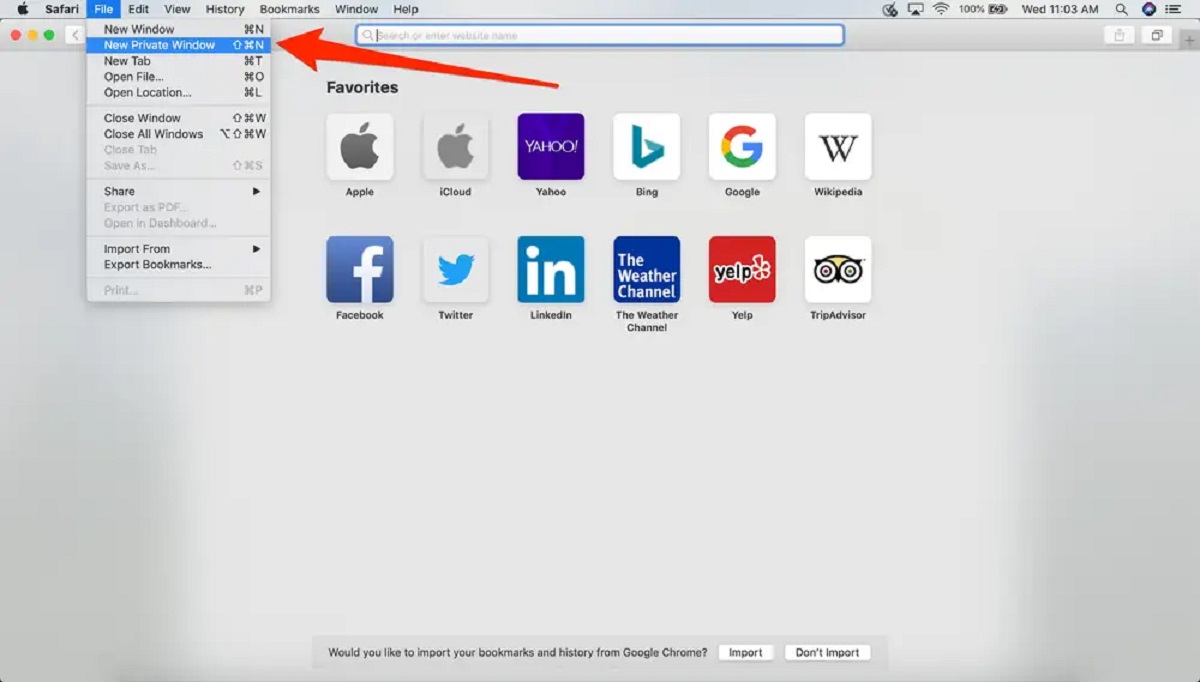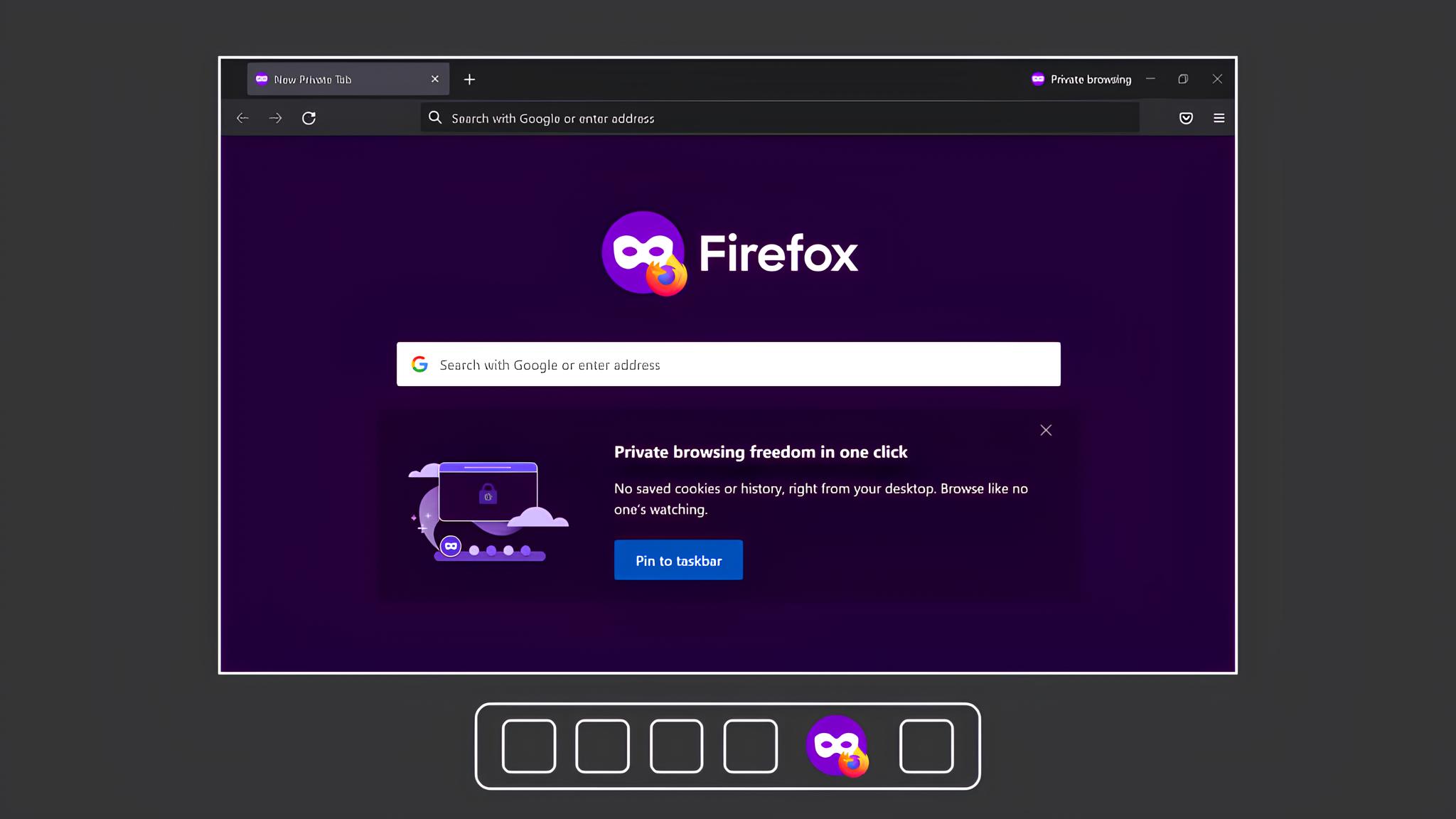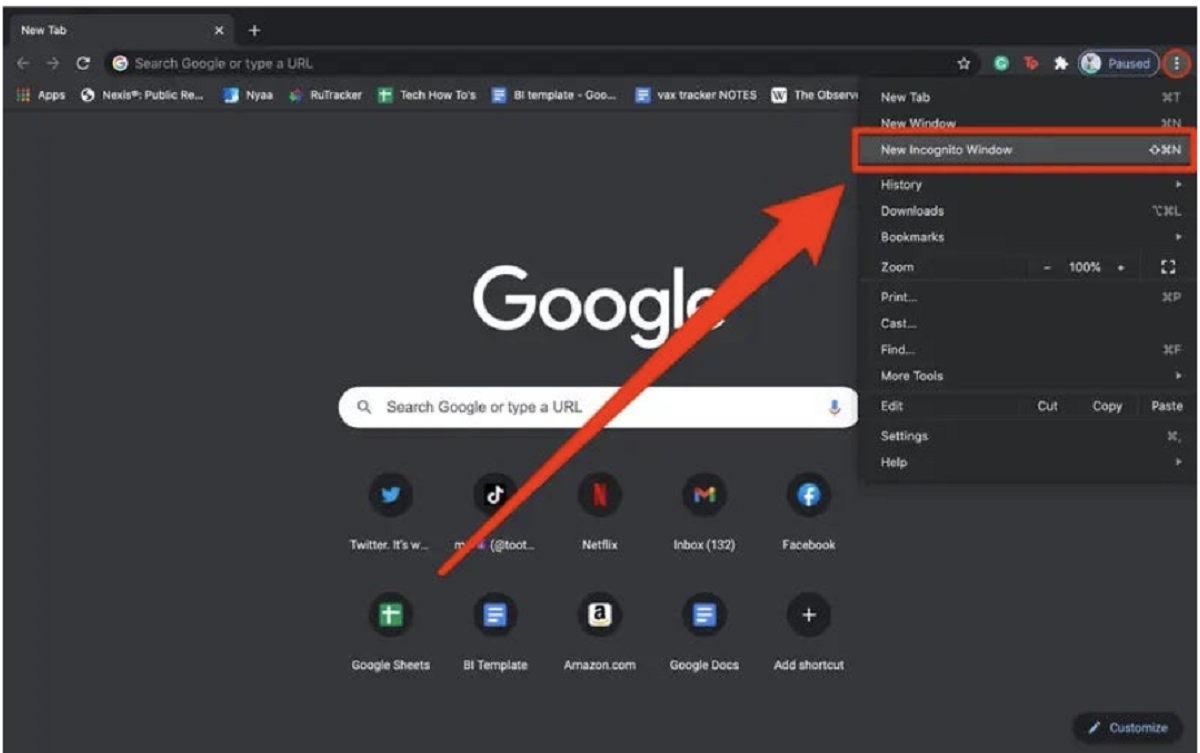Introduction
In today's digital age, where online activities have become an integral part of our daily lives, the need for privacy and security while browsing the internet has never been more crucial. This is where private browsers come into play. These specialized web browsers are designed to offer users a heightened level of privacy and protection, ensuring that their online activities remain confidential and secure.
Private browsers are equipped with a range of features and functionalities that set them apart from traditional web browsers. From data encryption to ad and tracker blocking, these browsers are tailored to safeguard users' sensitive information and shield them from various online threats.
As we delve deeper into the realm of private browsers, it becomes evident that their significance extends beyond mere anonymity. They serve as a shield against invasive tracking mechanisms, malicious entities, and unauthorized data collection, thereby empowering users to navigate the online landscape with confidence and peace of mind.
In the subsequent sections, we will explore the core functionalities of private browsers, shedding light on their pivotal role in preserving privacy, enhancing security, and fostering a safer browsing experience for individuals across the digital spectrum.
Privacy Protection
Privacy protection stands as the cornerstone of private browsers, encapsulating a suite of robust measures aimed at shielding users from prying eyes and unauthorized access to their online activities. At the heart of this functionality lies the commitment to preserving the confidentiality of sensitive information, thereby instilling a sense of trust and security among users.
Private browsers employ a range of techniques to fortify privacy, starting with the prevention of third-party tracking. By obstructing invasive tracking mechanisms commonly employed by advertisers and data brokers, these browsers enable users to navigate the web without the fear of being incessantly monitored or profiled based on their online behavior. This not only safeguards their privacy but also minimizes the risk of targeted advertisements and data exploitation.
Furthermore, private browsers often incorporate features such as fingerprinting protection and anti-phishing tools to fortify users against identity theft and fraudulent activities. By thwarting attempts to gather unique device information and combatting deceptive websites, these browsers serve as a bulwark against potential security breaches and online scams, thereby fostering a secure and trustworthy browsing environment.
In addition to these proactive measures, private browsers frequently integrate privacy-centric search engines and default to secure HTTPS connections to ensure that users' search queries and data transmissions remain encrypted and shielded from unauthorized interception. This encryption mechanism serves as a safeguard against eavesdropping and data breaches, reinforcing the confidentiality of users' online interactions.
By amalgamating these privacy-centric features, private browsers empower users to reclaim control over their digital footprint, fostering a browsing experience that is devoid of intrusive surveillance and data exploitation. This, in turn, cultivates a climate of trust and confidence, compelling users to embrace private browsers as their preferred gateway to the online realm.
In essence, privacy protection within private browsers transcends the mere concealment of browsing history; it embodies a holistic approach to safeguarding users' digital privacy and fortifying their online defenses against an array of potential threats. As such, the integration of robust privacy protection mechanisms within private browsers stands as a testament to their unwavering commitment to preserving the sanctity of users' online experiences.
Data Encryption
Data encryption serves as a pivotal pillar within the realm of private browsers, underpinning the fundamental tenet of safeguarding users' sensitive information from unauthorized access and interception. At its core, data encryption entails the transformation of plaintext data into an unintelligible format, known as ciphertext, using complex algorithms and cryptographic keys. This process renders the data indecipherable to unauthorized entities, thereby fortifying its confidentiality and integrity during transmission and storage.
Private browsers leverage robust encryption protocols to ensure that users' online interactions, including website visits, form submissions, and communication with servers, are shielded from prying eyes and potential eavesdropping. By employing secure socket layer (SSL) and transport layer security (TLS) protocols, private browsers facilitate the establishment of encrypted connections between users' devices and web servers, thereby obfuscating the transmitted data and thwarting unauthorized interception.
Moreover, the implementation of end-to-end encryption within private browsers augments the security of user-generated content, such as messages, emails, and file transfers. This encryption methodology ensures that the data remains encrypted throughout its entire journey, from the point of origin to the intended recipient, mitigating the risk of unauthorized access and tampering.
In addition to securing data during transit, private browsers prioritize the encryption of locally stored information, including browsing history, cookies, and saved passwords. By employing robust encryption algorithms to safeguard these data elements, private browsers fortify users against unauthorized access to their browsing habits and sensitive credentials, thereby bolstering the overall privacy and security of their online activities.
Furthermore, private browsers often integrate advanced encryption standards and adhere to industry best practices to uphold the integrity of their encryption mechanisms. This entails regular updates and adherence to cryptographic guidelines, ensuring that the encryption protocols remain resilient against emerging threats and vulnerabilities.
In essence, data encryption within private browsers serves as a linchpin in fortifying the confidentiality and security of users' online interactions. By harnessing advanced encryption techniques and adhering to stringent security standards, private browsers empower users to navigate the digital landscape with confidence, knowing that their sensitive information remains shielded from unauthorized access and interception.
Ad and Tracker Blocking
Ad and tracker blocking represent a pivotal facet of private browsers, embodying a proactive stance against the pervasive intrusion of online advertisements and surreptitious tracking mechanisms. At its essence, ad and tracker blocking within private browsers serves as a shield against the incessant barrage of targeted ads and the covert surveillance orchestrated by various entities across the digital landscape.
Private browsers deploy a multifaceted approach to ad and tracker blocking, encompassing the interception and neutralization of intrusive advertisements, as well as the thwarting of clandestine tracking scripts and cookies. By leveraging advanced filtering algorithms and rule sets, these browsers effectively curtail the dissemination of obtrusive ads, thereby fostering a clutter-free and distraction-free browsing experience for users.
Moreover, private browsers integrate robust tracker blocking mechanisms to impede the surreptitious tracking of users' online activities by third-party entities. This entails the identification and neutralization of tracking cookies, beacons, and scripts that seek to monitor users' behavior across various websites. By obstructing these tracking mechanisms, private browsers afford users a heightened level of anonymity and privacy, shielding them from the pernicious implications of incessant surveillance and data profiling.
Furthermore, the integration of ad and tracker blocking within private browsers extends beyond mere ad hoc measures, encompassing comprehensive databases of known ad servers, trackers, and malicious domains. By leveraging these databases, private browsers proactively intercept and block connections to these entities, thereby fortifying users against potential security risks and privacy infringements.
In addition to shielding users from intrusive ads and covert tracking, the ad and tracker blocking functionalities within private browsers contribute to a streamlined and expedited browsing experience. By mitigating the overhead associated with loading and rendering numerous ads and tracking scripts, these browsers optimize page load times and conserve bandwidth, thereby enhancing the overall efficiency and responsiveness of users' browsing sessions.
In essence, ad and tracker blocking within private browsers epitomize a proactive stance against the encroachment of invasive advertisements and surreptitious tracking mechanisms. By amalgamating advanced filtering algorithms, comprehensive databases, and robust tracking interception mechanisms, private browsers empower users to navigate the online landscape with confidence, knowing that their browsing experience remains free from intrusive ads and clandestine surveillance.
Secure Browsing
Secure browsing stands as a paramount feature within private browsers, encapsulating a multifaceted approach to fortifying the overall security posture of users' online interactions. At its core, secure browsing encompasses a spectrum of proactive measures and robust safeguards aimed at mitigating potential security risks, thwarting malicious activities, and fostering a resilient defense against a myriad of online threats.
Private browsers prioritize the establishment of secure and encrypted connections between users' devices and web servers, thereby obviating the risk of unauthorized interception and data tampering. By leveraging advanced encryption protocols such as SSL/TLS, these browsers ensure that users' data transmissions remain shielded from potential eavesdropping and interception, fostering a climate of trust and confidentiality.
Moreover, secure browsing within private browsers extends beyond encryption, encompassing the proactive identification and neutralization of potential security vulnerabilities and threats. These browsers often integrate real-time threat detection mechanisms and phishing protection, thereby fortifying users against deceptive websites, malware-infested domains, and fraudulent activities. By leveraging comprehensive databases of known threats and employing heuristic analysis, private browsers serve as a bulwark against a spectrum of potential security risks, empowering users to navigate the web with confidence and peace of mind.
In addition to proactive threat mitigation, private browsers frequently integrate sandboxing and isolation mechanisms to segregate potentially malicious code and untrusted content from the underlying operating system and user data. This compartmentalization strategy serves to mitigate the impact of potential security breaches and malware infections, thereby fortifying the overall resilience of users' browsing environments.
Furthermore, secure browsing within private browsers often encompasses the integration of secure password management and multi-factor authentication functionalities, empowering users to fortify their online accounts and credentials against unauthorized access and exploitation. By facilitating the generation and storage of complex, unique passwords and advocating for the adoption of multi-factor authentication, private browsers bolster the security posture of users' online identities, thereby mitigating the risk of unauthorized account compromise and data breaches.
In essence, secure browsing within private browsers embodies a holistic approach to fortifying the overall security and resilience of users' online experiences. By amalgamating robust encryption, proactive threat mitigation, sandboxing, and secure authentication mechanisms, private browsers empower users to navigate the digital landscape with confidence, knowing that their online interactions remain shielded from potential security risks and vulnerabilities.
Conclusion
In conclusion, private browsers stand as a beacon of privacy, security, and empowerment within the ever-evolving digital landscape. By amalgamating a diverse array of privacy-centric features and robust security measures, these specialized web browsers have redefined the paradigm of online browsing, offering users a heightened level of control, confidentiality, and peace of mind.
The pivotal role of private browsers in preserving privacy is underscored by their proactive stance against invasive tracking mechanisms, deceptive websites, and unauthorized data collection. Through the integration of advanced privacy protection measures, including fingerprinting protection, anti-phishing tools, and encryption-centric search engines, private browsers empower users to navigate the web without the fear of incessant monitoring or data exploitation. This not only fosters a climate of trust and confidence but also reaffirms users' autonomy over their digital footprint.
Furthermore, the robust data encryption mechanisms employed by private browsers serve as a bulwark against unauthorized access and interception, ensuring that users' sensitive information remains shielded from prying eyes and potential eavesdropping. By leveraging advanced encryption protocols and adhering to industry best practices, private browsers fortify the confidentiality and integrity of users' online interactions, thereby fostering a secure and resilient browsing environment.
The integration of ad and tracker blocking within private browsers epitomizes a proactive stance against the encroachment of intrusive advertisements and surreptitious tracking mechanisms. By leveraging advanced filtering algorithms, comprehensive databases, and robust tracking interception mechanisms, private browsers empower users to navigate the online landscape with confidence, knowing that their browsing experience remains free from intrusive ads and clandestine surveillance.
Moreover, secure browsing within private browsers encompasses a multifaceted approach to fortifying the overall security posture of users' online interactions. By prioritizing the establishment of secure and encrypted connections, proactive threat mitigation, sandboxing, and secure authentication mechanisms, private browsers empower users to navigate the digital landscape with confidence, knowing that their online interactions remain shielded from potential security risks and vulnerabilities.
In essence, private browsers represent a paradigm shift in the realm of online privacy and security, offering users a sanctuary from invasive tracking, targeted advertisements, and potential security threats. By championing the principles of privacy, security, and user empowerment, private browsers have emerged as a steadfast ally in the pursuit of a safer, more confidential, and more secure online experience.

























